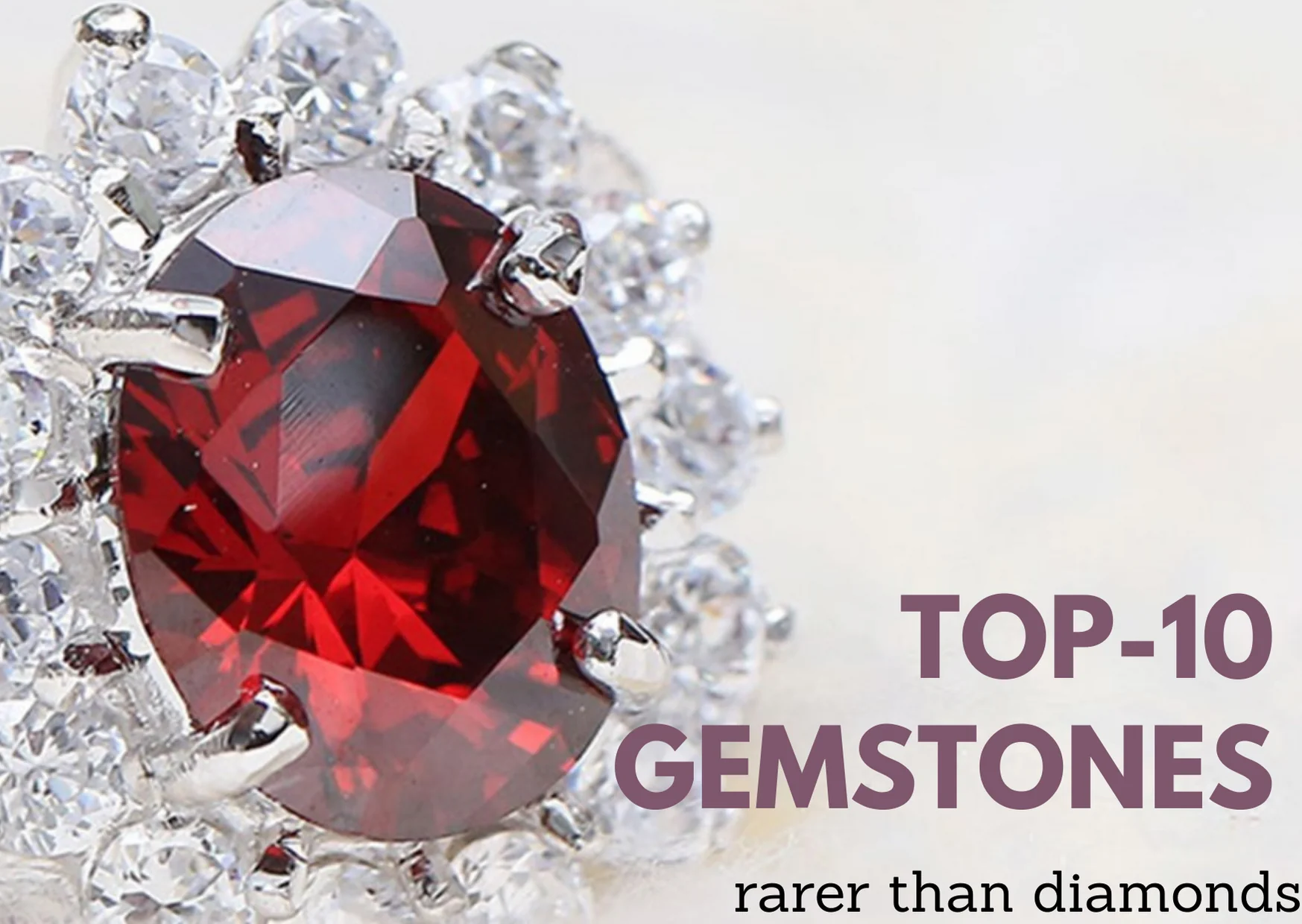The amount of minerals in nature and the difficulty of mining determine their value. That’s why diamonds are so expensive. In fact, there are 10 minerals in the world that are rarer and more precious than diamonds. Not only are they rare in number, but the cost and difficulty of mining are extremely high, and it is even difficult to cut out a complete shape of the gem.
10th Red Beryl
Red beryl, also known as Bixbite, is a rare mineral whose intense color is caused by the manganese element inside the mineral. At present, the natural red beryl is mainly found in the rhyolite of Mount Thomas and Mount Voo in Utah, USA.
Red beryl was first mentioned in 1904, when mineralogist thought it was similar to jade and sapphire, so it was also known as red jade and blood jade, but it is actually rarer than both minerals.

9th Jeremejevite
Borauxite is an extremely rare blue borate mineral, most notably produced in Namibia, Africa. Borauxite is blue, white and colorless. Known mining areas are only in the Tajik section of the Pamir Plateau and three small mines in Namibia, Africa, and the Eiffel Mountain in Germany, which are extremely rare.
Boralite was first discovered in 1883 in the Adun-Chilon mountains of Siberia by Mt. Soktui, Nerschinsk. It was named after the Soviet mineralist Pavel Vladimirovich Eremeev (1830-1899).
Boralite was first discovered in 1883 in the Adun-Chilon mountains of Siberia by Mt. Soktui, Nerschinsk. It was named after the Soviet mineralist Pavel Vladimirovich Eremeev (1830-1899).

8th Musgravite
It was first discovered in South Australia in 1967 and named after the Musgrave Range in Australia, where it was found, and has since been found in Greenland, Madagascar, and Antarctica. Until 2005, only eight stones with clear shape and pure color have been cut in the world.
The Sri Lankan Jewelry Export company owns one of the world’s largest Musgravite gemstones, which was tested and certified 0707330 by Gubelin Laboratories in Lucerne, Switzerland on September 6, 2007.

7th Red Diamond
Red diamond is also known as light rubrospar. Red diamonds are the rarest of the colored diamonds. Aegyle Mine in Australia produces a small amount of red diamonds.
the largest Red diamond in the world was discovered by a farmer in Brazil in 1960 and is called “the Moussaieff Red”.
This red diamond is triangular in shape, weighing 5.11 carats, although compared with other diamonds, the weight of this diamond is not worth mentioning, but it is the largest diamond in the red diamond, its value is far higher than its weight.

6th Grandidierite
The first complete specimen was found in Sri Lanka, but it has since been found only on the African island of Madagascar. It has the characteristic of reflecting multicolored polarized light.

5th Poudretteite
It was first discovered in Quebec, Canada, in the mid-1960s, but was not given a name. It was not until 1987 that it was named as a new mineral. But because it is so rare, it is rarely discussed.

4th Benitoite
When Blue Cone was discovered in 1906, it was mistaken for sapphire. At present, blue cone ore is only produced in SAN Bailey County, California, USA, although samples of blue cone ore have been found in Arkansas and Japan, but it is difficult to cut them into gems.
Bluenite is pale blue or colorless, but also pink. But the most special thing about blue cone ore is that it emits a dazzling blue fluorescence under ultraviolet light.

3rd Tanzanite
Tanzanite, named after its origin in Tanzania, East Africa, after the promotion of Tiffany Company in the United States, this gem has gradually become well-known.
The reason why it is named Tanzanite is also because this gemstone is like the dusk sky in Tanzania, the color is dark blue with purple, and has a strong multicolor, but the hardness of the gemstone itself is 6.5 MoHs hardness, and because Tanzania has been in the civil war for a long time, it is very poor, the mining of gemstones is not easy, the output is rare, and the crystals are not large. Therefore, in general, the probability of being able to buy more than 3 to 5 carats is not high, so the price is high.

2th Alexandrite
The English name of Alexandrite is translated as Alexandrite stone, which is one of the five precious stones and belongs to the color-changing variety of chrysochlorite. Due to its color-changing effect of appearing green in sunlight and red in candlelight and incandescent light, many poets have praised alexandrian as “the emerald of the day and the ruby of the night.”
When you hold an Alexandrite in your hand and play with it, it refracts multicolored polarized light as it turns.

1st Painite
The new gem mineral was discovered in 1951 in the gemstone placer of the Mogok region of Burma, and was named after the British mineralogist Arthur CD Pain.
The specific chemical composition of the mineral is unclear, and the mineral is a transparent dark red crystal, and the shape is naturally hexagonal. There is currently only one specimen in Pain’s collection, weighing 1.7 grams.
In 1957, it was internationally recognized as a new gemstone mineral, and in 2005, it was listed as the rarest gemstone mineral in the Guinness World Records. As of 2005, only 25 samples had been found worldwide.
However, thanks to new identification techniques, the number of aluminum-borozircalite crystals has also increased, although the number that can be cut into high-quality gems is still very small. Until the end of 2004, only two had been cut into faceted gems.

















